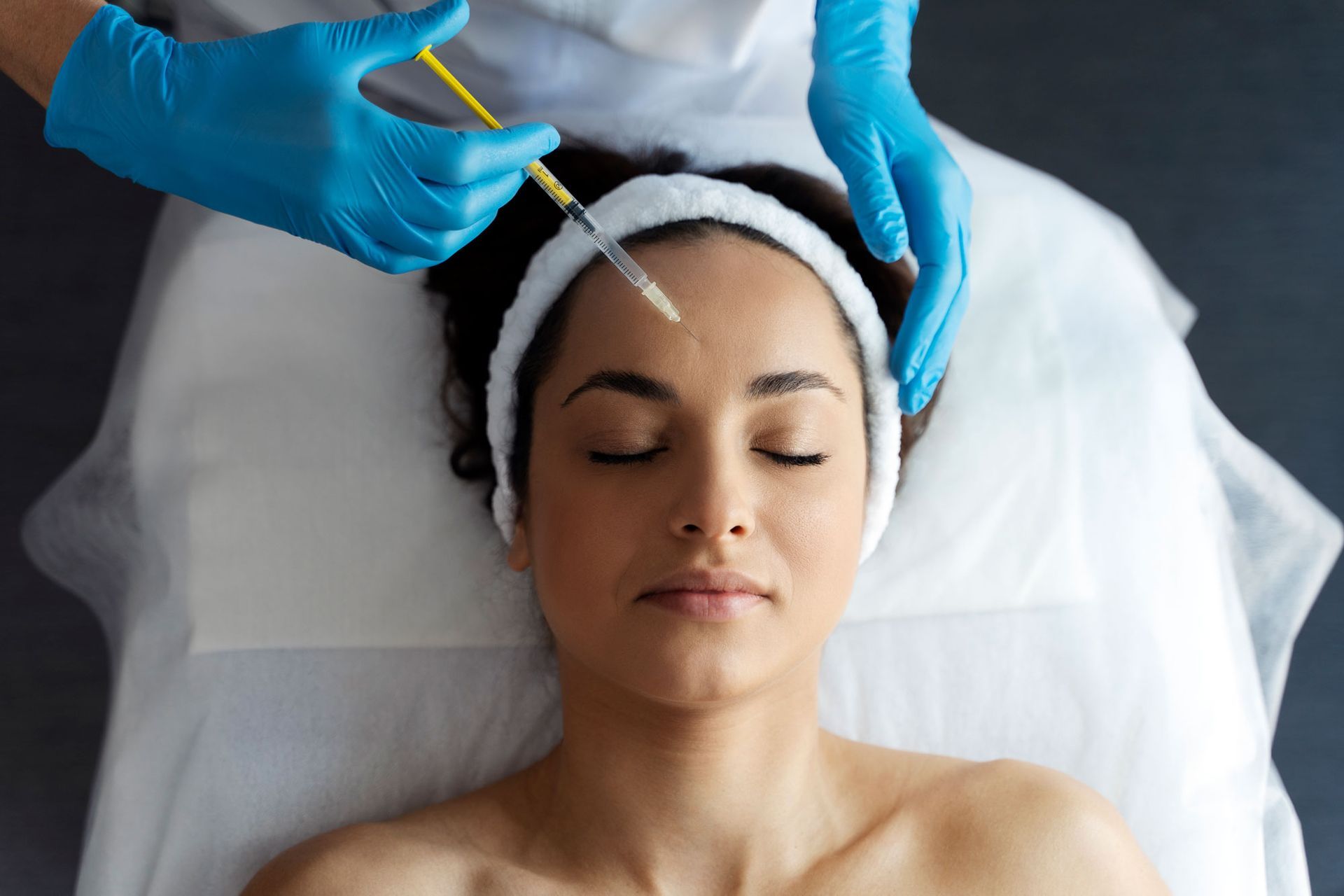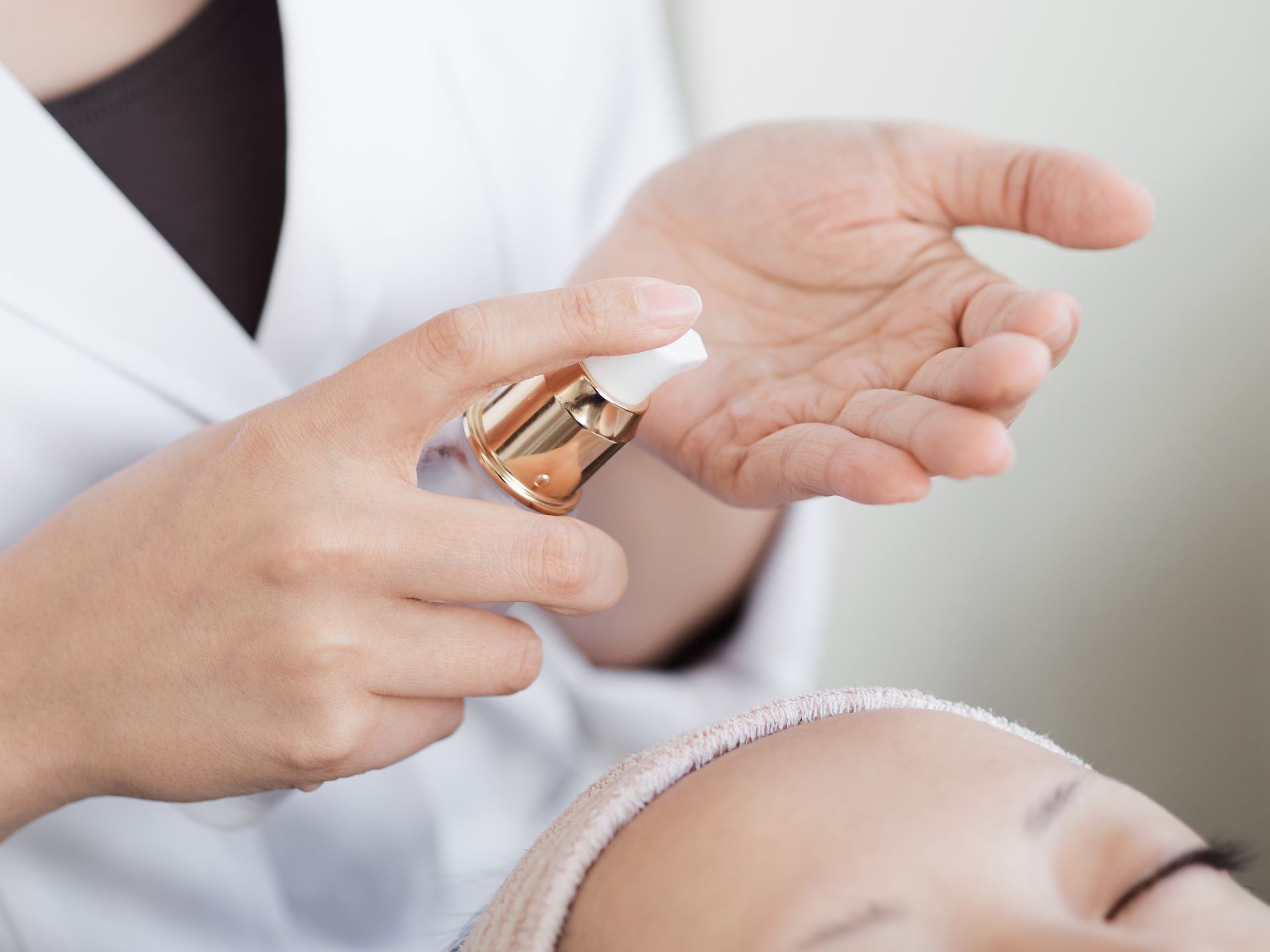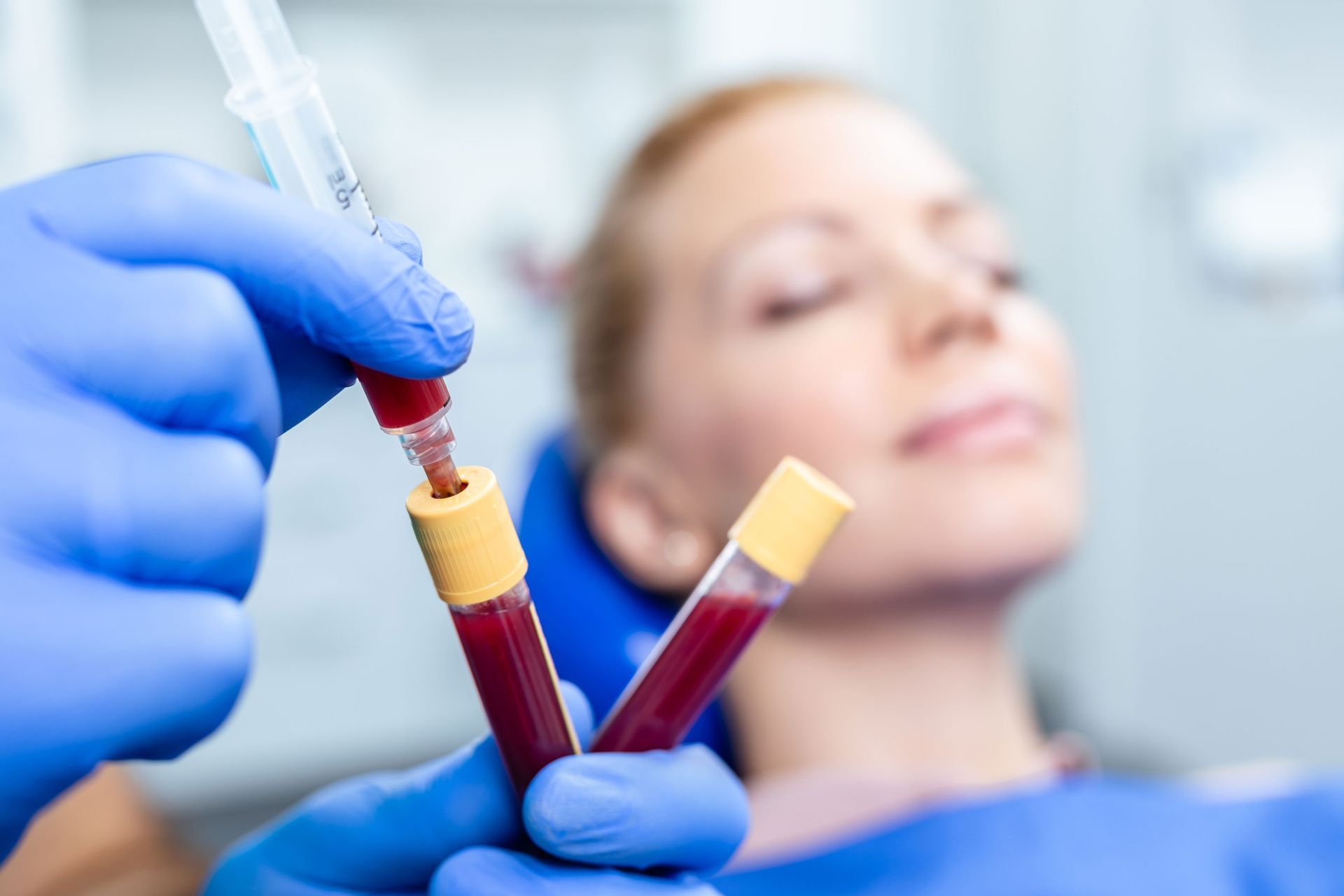Resources

In a world where first impressions matter, Botox has emerged as a transformative solution for both aesthetic refinement and medical relief. Beyond its renowned ability to smooth wrinkles, this FDA-approved treatment offers a spectrum of advantages that cater to holistic well-being. Let’s explore how Botox can rejuvenate your appearance, elevate your confidence, and even address chronic health concerns—all through a quick, minimally invasive procedure. Aesthetic Enhancements That Speak Volumes Botox’s magic lies in its capacity to soften dynamic wrinkles—those subtle lines formed by years of smiling, frowning, or squinting. By gently relaxing targeted facial muscles, it restores a youthful radiance, turning back the clock on crow’s feet, forehead lines, and frown lines. The results? A refreshed, natural-looking glow that requires no downtime, letting you return to daily life immediately]. But the benefits don’t stop at aesthetics. Did you know Botox can also refine skin texture and minimize pore size? Clinical studies report 95% patient satisfaction with these secondary improvements. Beyond Beauty: Unexpected Medical Advantages While Botox is celebrated for its cosmetic results, its therapeutic applications are equally groundbreaking. For those battling chronic migraines, injections can reduce headache frequency by blocking pain-signaling nerves. Excessive sweating (hyperhidrosis) becomes manageable as Botox inhibits overactive sweat glands, offering months of relief from social discomfort. Jaw tension from TMJ disorders? Botox relaxes clenched muscles, alleviating pain and improving jaw function. Even conditions like overactive bladder and muscle spasms respond to this versatile treatment, showcasing its role in enhancing quality of life. Instant Gratification Meets Lasting Confidence One of Botox’s most appealing traits is its rapid impact. Visible improvements often appear within days, with full results emerging over two weeks—a timeline far quicker than many cosmetic alternatives. These effects typically last 3–4 months, allowing flexibility to adjust treatments as needed. Whether you’re preparing for a special event or seeking long-term rejuvenation, Botox adapts to your goals. Your Journey to Self-Assurance Starts Here Choosing Botox isn’t just about looking younger—it’s about reclaiming confidence in your skin. Patients frequently describe a renewed sense of self-esteem as mirror reflections align with their vibrant inner selves. And with customizable treatment plans, you control the degree of enhancement, ensuring results that feel authentically *you*. Ready to explore how Botox can transform your life? Consult our expert team at 705-789-1874.

In the fast-paced world of surgery, decision-making is a critical skill that can mean the difference between life and death. As technology continues to advance, surgeons are finding themselves at a crossroads, much like the airline industry did years ago. By embracing new technologies and adopting innovative decision-making processes, surgeons can revolutionize their field and improve patient outcomes. The Art of Surgical Decision-Making Clinical decision-making is a core competency of surgical practice, involving a complex interplay of intuitive and analytical thinking. Surgeons must navigate a continuum of mental processes, ranging from subconscious pattern recognition to conscious, analytical reasoning. This ability to seamlessly transition between these modes of thinking is what sets expert surgeons apart. Expert surgeons: - Recognize and respond quickly to mismatches between observations and expectations - Cope with information gaps and uncertainties - Apply learned rules and algorithms to specific presentations However, even for experts, articulating these cognitive processes can be challenging due to their complexity. Lessons from the Skies The airline industry has long been at the forefront of incorporating technology to enhance decision-making and safety. Surgeons can learn valuable lessons from this sector's digital transformation: Data-Driven Decisions: Airlines use big data and analytics to optimize operations and improve efficiency. Surgeons can similarly leverage data to inform their decision-making processes, from preoperative planning to postoperative care. Artificial Intelligence and Machine Learning: In aviation, AI and ML power predictive maintenance systems, reducing downtime and costs. In surgery, these technologies could assist in predicting complications and optimizing surgical outcomes. Automated Systems: Airlines have implemented automated check-in and boarding systems to streamline processes. Surgeons could benefit from automated preoperative checklists and decision support tools to enhance safety and efficiency. Real-Time Monitoring: The Internet of Things (IoT) enables real-time monitoring of aircraft systems. In the operating room, similar technologies could provide surgeons with continuous, real-time patient data during procedures. Implementing Technology in Surgical Practice To truly revolutionize surgical decision-making, the following steps should be considered: Embrace AI-Driven Tools: Implement AI-powered decision support systems to enhance accuracy and leverage big data effectively. Enhance Operational Awareness: Utilize real-time monitoring and analytics tools to improve situational awareness during surgeries. Adopt Cloud-Based Solutions: Implement cloud technology to facilitate instant data sharing and collaboration across surgical teams. Invest in Training: Develop comprehensive training programs to help surgeons adapt to new technologies and decision-making frameworks. The Future of Surgical Decision-Making Integrating technology into surgical decision-making will become increasingly important as we look to the future. By learning from the airline industry's digital transformation, surgeons can: - Improve patient safety through enhanced monitoring and predictive analytics - Optimize surgical outcomes by leveraging data-driven insights - Streamline processes and reduce cognitive load during complex procedures The path forward requires a commitment to continuous learning and adaptation. One research study notes, “If surgeons are to assist trainees in developing their decision-making skills, the processes need to be identified and defined, and the competency needs to be measurable.” By embracing technology and refining their decision-making processes, surgeons can elevate their practice to new heights, ensuring better patient outcomes and advancing the field of surgery. In my ideal world of surgery, if we have the best tools to do our job, we deliver. We need technology and financial resources to use and maximize our skills, which take years to develop.

Retinol has earned its reputation as the gold standard in skincare for good reason. This vitamin A derivative offers a multitude of benefits that can transform your skin, making it a must-have ingredient in any comprehensive skincare regimen. The Science Behind Retinol Retinol belongs to a class of compounds called retinoids, which are derived from vitamin A. When applied to the skin, retinol penetrates deep into the dermis, where it works its magic. Here's what happens: Cell Turnover: Retinol accelerates the skin's natural cell turnover process, helping to shed dead skin cells more quickly. Collagen Production: It stimulates collagen production, which is crucial for maintaining skin's firmness and elasticity. Blood Vessel Formation: Retinol promotes the formation of new blood vessels, improving skin color and overall appearance. Key Benefits of Retinol 1 Combats Signs of Aging - One of retinol's most celebrated benefits is its ability to fight visible signs of aging. - Reduces fine lines and wrinkles - Improves skin texture and firmness - Fades age spots and evens out skin tone 2 Treats Acne - Retinol is not just for mature skin; it's also highly effective in treating acne.- - Unclogs pores to prevent breakouts - Reduces inflammation associated with acne - Helps fade acne scars and hyperpigmentation 3 Improves Overall Skin Health - Beyond its anti-aging and acne-fighting properties, retinol offers several other benefits. - Enhances skin's radiance and glow - Refines pore size - Improves skin's overall texture and tone How to Incorporate Retinol into Your Routine While retinol is powerful, it requires careful introduction to your skincare routine. Start Slow: Begin with a low concentration and use it 2-3 times weekly. Gradually Increase: Increase frequency and concentration over time as your skin builds tolerance. Apply at Night: Use retinol products in your evening routine, as they can increase sun sensitivity. Pair with Sunscreen: Always use a broad-spectrum sunscreen during the day when using retinol. Choosing the Right Retinol Product With numerous retinol products available, choosing one that suits your skin type and concerns is essential. We can help you with this if you like. We have different concentrations to offer you. - For beginners or sensitive skin: Start with a low concentration (0.01% - 0.03%) - For more experienced users: Gradually work up to higher concentrations (0.1% and above) - Consider formulation: Retinol comes in serums, creams, and oils to suit different preferences The Long-Term Benefits Consistency is key when using retinol. While some improvements may be visible within weeks, the most significant benefits are seen with long-term use. With regular application, you can expect: - Continued improvement in skin texture and tone - Sustained reduction in fine lines and wrinkles - Long-lasting clarity and radiance Conclusion Retinol stands out as a genuinely transformative ingredient in skincare. Its ability to address multiple skin concerns simultaneously makes it an invaluable addition to any skincare routine. Whether you're looking to combat signs of aging, clear acne, or improve your overall skin health, retinol offers a science-backed solution that delivers accurate results. Please introduce it slowly, be patient and consistent, and you'll be on your way to getting your best skin yet. We have Alumier MD products. Please get in touch with our office - 705-789-1874

Here are some key things to bring to your first consultation with a new doctor: Medical Records and Information - List of current medications, including dosages and frequency - Medical history, including past surgeries, hospitalizations, and major illnesses - Family medical history, especially for conditions like cancer, heart disease, etc. - Immunization records - Recent lab results or imaging studies (X-rays, MRIs, etc.) - Names and contact information for other doctors you see Health card - Insurance card - Any referral forms if required by your insurance List of Questions and Concerns - Write down your main health concerns and symptoms - Note any questions you want to ask the doctor - Prioritize your list, focusing on the most important issues Other Helpful Items - A notebook and pen to take notes during the appointment - A family member or friend for support - Calendar to schedule any follow-up appointments - List of allergies to medications or other substances - Information on your diet, exercise habits, alcohol/tobacco use For the Appointment - Arrive 10 min minutes early to complete paperwork - Wear comfortable clothing that allows for a physical exam if needed - Be prepared to discuss your full medical history openly and honestly By bringing these items, you'll help ensure a productive first visit and allow your new doctor to get a comprehensive picture of your health. Don't hesitate to ask questions and voice any concerns during the appointment. Establishing good communication from the start will help build a strong doctor-patient relationship.

Platelet-rich plasma (PRP) therapy has emerged as an innovative and promising treatment in regenerative medicine. This blog will explore the science behind PRP, its applications, and what patients can expect from this cutting-edge therapy. What is Platelet-Rich Plasma? Platelet-rich plasma is a concentration of platelets derived from a patient's own blood. Platelets are blood cells that play a crucial role in clotting and wound healing. They contain growth factors and other bioactive proteins that stimulate cellular repair and regeneration. To create PRP, a small sample of the patient's blood is drawn and then processed in a centrifuge. This separates the blood components, allowing for the extraction of a plasma sample with a high concentration of platelets - typically 3-5 times higher than normal blood. How Does PRP Therapy Work? When injected into an injured or damaged area, the concentrated platelets release growth factors that: 1. Stimulate tissue repair 2. Increase blood flow to the area 3. Promote cell regeneration 4. Reduce inflammation This process can accelerate healing and potentially improve function in various tissues, including tendons, ligaments, muscles, and joints. Applications of PRP Therapy PRP therapy has shown promise in treating a wide range of conditions: 1. Orthopedic injuries and conditions (e.g., tendonitis, osteoarthritis) 2. Sports-related injuries 3. Hair loss (androgenic alopecia) 4. Skin rejuvenation 5. Wound healing In orthopedics, PRP has been used to treat chronic tendon injuries like tennis elbow and to manage osteoarthritis pain. In dermatology, it's gaining popularity as a treatment for hair loss and as part of facial rejuvenation procedures. The PRP Procedure A typical PRP treatment involves the following steps: 1. Blood draw: A small amount of blood is taken from the patient. 2. Processing: The blood is centrifuged to separate and concentrate the platelets. 3. Preparation: The platelet-rich plasma is extracted. 4. Injection: The PRP is injected into the target area, sometimes guided by ultrasound. The entire process usually takes less than an hour and is performed on an outpatient basis. Effectiveness and Research While PRP therapy shows promise, it's important to note that research is still ongoing. Some studies have shown positive results, particularly in treating certain orthopedic conditions and hair loss. However, the effectiveness can vary depending on the specific condition being treated and the individual patient. In hair loss treatment, PRP has shown potential in stimulating hair growth and improving hair thickness. Safety and Side Effects One of the key advantages of PRP therapy is its safety profile. Since the treatment uses the patient's own blood, the risk of allergic reactions or transmission of infectious diseases is minimal. The most common side effects are mild and typically include: - Temporary pain at the injection site - Minor bruising or bleeding - Short-term inflammation. Cost and Insurance Coverage The cost of PRP therapy can vary widely depending on the treatment area and the number of sessions required. Prices typically range from $500 to $2,000 USD per treatment. Conclusion Platelet-rich plasma therapy represents an exciting frontier in regenerative medicine. By harnessing the body's own healing mechanisms, PRP offers a potentially effective treatment option for a variety of conditions. While more research is needed to fully understand its efficacy across different applications, PRP therapy continues to gain popularity among patients and healthcare providers alike. As with any medical treatment, it's crucial to consult with a qualified healthcare professional to determine if PRP therapy is appropriate for your specific condition. They can provide personalized advice based on your medical history and current health status.

Botox, a household name in the world of cosmetic treatments, has a rich and intriguing history that spans over a century. This remarkable substance has evolved from a potentially deadly toxin to a versatile medical and aesthetic tool. Let's explore the fascinating journey of Botox and its wide-ranging applications. The Discovery of Botulinum Toxin The story of Botox begins in the late 19th century when a group of Belgian musicians fell ill after eating smoked ham at a funeral. This incident led to the discovery of botulinum toxin by Dr. Emile van Ermengem, a professor of bacteriology at the University of Ghent. Initially dubbed "sausage poison" due to its association with poorly prepared meat products, botulinum toxin would later become the foundation for one of the most popular cosmetic treatments in the world. Early Medical Applications It wasn't until the mid-20th century that researchers began to explore the therapeutic potential of botulinum toxin. In the 1950s, scientists started investigating its possible medical uses. The real breakthrough came in the 1970s when American ophthalmologist Dr. Alan Scott began researching the toxin as a treatment for eye impairments. In 1978, Dr. Scott made history by injecting botulinum toxin into a patient for the first time, aiming to treat eye muscles after retinal detachment surgery. This groundbreaking experiment paved the way for treating conditions like strabismus (crossed eyes) and blepharospasm (involuntary eye spasms). The Accidental Discovery of Cosmetic Benefits The cosmetic potential of botulinum toxin was discovered serendipitously. In the 1980s, doctors noticed that patients receiving injections for eye conditions also experienced smoothing of facial lines. This unexpected side effect sparked interest in the aesthetic applications of the toxin. The Birth of Botox In 1989, the FDA approved botulinum toxin for therapeutic use in treating strabismus and blepharospasm. Two years later, in 1991, the rights to the drug were sold, and it was rebranded as Botox by Allergan in 1992. Rise to Cosmetic Fame Throughout the 1990s, Botox gained popularity as a powerful tool for maintaining a youthful appearance. Doctors refined their techniques for cosmetic applications, and in 2002, the FDA approved Botox for cosmetic use in treating glabellar lines (frown lines between the eyebrows). Modern Applications Today, Botox has a wide range of both medical and cosmetic applications: Medical Uses: - Treating chronic migraines - Managing excessive sweating (hyperhidrosis) - Alleviating muscle spasms and movement disorders - Addressing overactive bladder issues - Treating cervical dystonia (neck muscle spasms) - Managing certain eye disorders - Anal fissures - Treatment of achalasia( disorder of the esophagus) Cosmetic Uses: - Reducing facial wrinkles, including crow's feet and forehead lines - Softening neck bands - Performing non-surgical brow lifts - Reducing gummy smiles - Contouring the jawline Safety and Considerations While Botox is generally considered safe when administered by qualified professionals, it's crucial to be aware of potential side effects and risks. These may include temporary muscle weakness, bruising, or swelling at the injection site. It's essential to consult with a licensed healthcare provider before undergoing any Botox treatment. The Future of Botox As research continues, new applications for Botox are constantly being explored. Ongoing trials are investigating its potential in treating conditions such as acne and psoriasis. The field of Botox treatments continues to evolve, promising exciting developments in both medical and aesthetic applications. There are several commercial products available on the market today: Botox- duration 3-6 months. Dysport- duration 3-6 months. Xeomin-duration 3-6 months. Jeuveau- Duration 3-6 months. Daxxify-duration 6-9 months- not approved in Canada. From its humble beginnings as a deadly toxin to its current status as a versatile medical and cosmetic tool, Botox has truly revolutionized the fields of medicine and aesthetics. Its journey is a testament to the power of scientific discovery and innovation, transforming an unlikely substance into a treatment that has helped millions of people worldwide.
